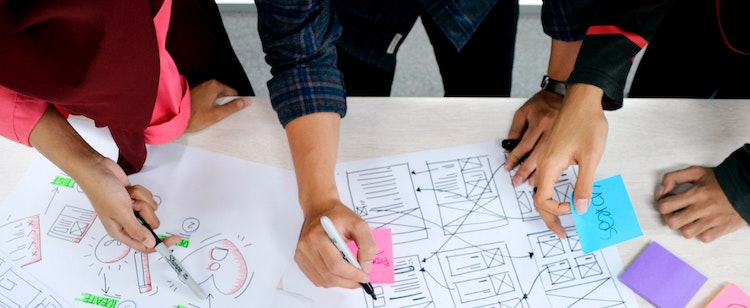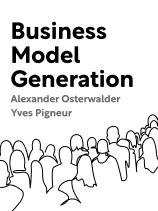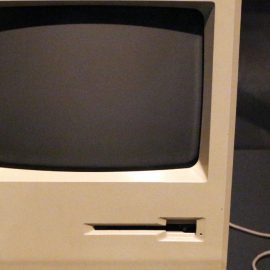

This article is an excerpt from the Shortform book guide to "Business Model Generation" by Alexander Osterwalder and Yves Pigneur. Shortform has the world's best summaries and analyses of books you should be reading.
Like this article? Sign up for a free trial here .
What is a free business model? How do companies finance the provision of their product/service for free?
A free business model is where one or more customer groups receive value at no cost (e.g. a software company offering a limited suite of features for free). Free users are always financed by another part of the business model or by another customer segment.
In this article, we’ll look at the different types of free business models, and how they generate revenue.
What Is a Free Business Model?
The free business model pattern ensures that at least one customer group always receives value for free. At a high level, free business models can be categorized into three groups, based on where their revenue comes from: advertising, premium services, and continuing purchases.
1. Advertising
In this model, businesses encourage advertisers to subsidize free users. For example, the revenue that Google receives from advertisers enables Google users to make unlimited searches for free. The more free users, the more advertisers are willing to pay to access these users.
In their book Business Model Generation, business innovation experts Osterwalder and Pigneur suggest the following priorities for free business models subsidized by advertising revenues:
| Customer Groups | Focus on large customer groups to entice advertisers. |
| Value Offer | Value comes from providing a free product or service to customers. The resulting customer base will create value for advertisers. |
| Touchpoints | Depends on the type of product or service. |
| Interactions | Depends on the type of product or service. |
| Profit Sources | Profit comes from advertisers using the platform. |
| Resources | The larger the platform becomes, the more of a resource it will become. |
| Critical Actions | Develop and maintain the platform to entice both customers and advertisers. |
| Network | Focus on developing partnerships that will make the platform more functional or attractive to all customer groups. |
| Expenses | Platform management and development, as well as traffic generation, will incur the highest costs. |
Facebook’s family of apps (Instagram, Messenger, Whatsapp) is one example of the advertising revenue model. Facebook auctions off advertising space within users’ feeds and stories based on the categorizations they’ve created. Further, Facebook provides advertisers with performance tracking data on how effective different campaigns are, for example, how often users click on certain advertisements. These categorizations and performance analyses are accurate enough that advertisers are willing to pay for the opportunity to create targeted marketing campaigns. In fact, over 10 million advertisers use Facebook’s advertising platform.
2. Premium Services
Premium Service models—Osterwalder and Pigneur refer to these as “Freemium models”—give customers the option to use the basic service for free or to pay for premium or additional services. The revenue from paying customers supports the costs incurred by the free users. The larger the customer base for paid services, the more revenue there is to support free users. For example, Evernote offers three plans to users: free, personal, and professional, and users can choose to upgrade and pay if the free service doesn’t meet their needs.
Osterwalder and Pigneur suggest the following layout for this type of business model:
| Customer Groups | Focus on creating a large group of free users. Eventually, convert a portion of this group into paying users. |
| Value Offer | Value comes from providing a free basic service to a large customer group, as well as offering a premium service to a smaller customer group. |
| Touchpoints | Online methods are usually the most cost-effective. |
| Interactions | Automate as much as possible to efficiently serve the large customer group. |
| Profit Sources | Profit will come from customers paying for premium services. Calculate the conversion rate from free users to premium users to determine profit. |
| Resources | The platform that offers the free service is the main resource. |
| Critical Actions | Develop, maintain, and promote the platform to ensure it meets the needs of both free and paying users. |
| Network | Focus on developing partnerships that will make the platform more functional or attractive to both free and paying users. |
| Expenses | Platform management and development will incur the highest costs. There will be fixed costs for providing services to the two different groups of users, free and paying. |
| The Difference Between Freemium and Free Trial Both customer acquisition methods offer free services to customers. However, the difference between the two is that Freemium models limit user functions whereas Free Trials limit user time. Freemium services offer a free basic service to users with an option to pay for premium functionality. Free Trials typically offer users premium functionality for a limited time, after which the user must make the decision to either start paying to use the service or to stop using the service. |
3. Continuing Purchases
Continuing Purchases models—Osterwalder and Pigneur refer to these as “Bait and Hook” models—are characterized by cheap or free products that provide customers with instant gratification but create demand for future products and services. Although businesses initially lose money, they can easily cover the costs and make a profit from the recurring income they receive from these transactions. For example, coffee machines that require specific capsules to function can sell at a loss since customers will inevitably pay for the capsules so that they can use the machine.
Osterwalder and Pigneur suggest the following layout for this type of business model:
| Customer Groups | Focus on large customer groups. |
| Value Offer | Value comes from attracting customers with an inexpensive or free offer, which will lead to a necessary follow-up product or service. |
| Touchpoints | Depends on the product or service. |
| Interactions | Interactions need to encourage customers to have no choice but to purchase follow-up products or services. |
| Profit Sources | Profit will come from multiple purchases of the follow-up product or service. |
| Resources | Product patents, as well as brand equity—brand reputation and familiarity—will be the biggest resources. |
| Critical Actions | Focus on the production and delivery of follow-up products & services. |
| Network | Focus on developing partnerships that will make the production and delivery of follow-up products and services more efficient. |
| Expenses | The main expenses will be the subsidization of the initial value offer, as well as the production of the follow-up products and services. |
Business models focused on continuing purchases generally offer the premium product (for example, coffee machine or printer) at a low cost and its complementary product (coffee capsules, printer ink) at a high price. In effect, businesses choose to initially make a loss in the hope of making a future profit from ongoing purchases. However, this gamble doesn’t always pay off—savvy buyers may calculate the ongoing expenses of owning such products and choose not to take the bait. The result is that businesses may end up making an overall loss from this model.
Many businesses have found the reverse of this model to be even more successful—they offer the premium product at a high price but keep the complementary product at a very low price. In other words, customers pay a high price upfront so that they can receive long-term benefits from low price add ons.

———End of Preview———
Like what you just read? Read the rest of the world's best book summary and analysis of Alexander Osterwalder and Yves Pigneur's "Business Model Generation" at Shortform .
Here's what you'll find in our full Business Model Generation summary :
- The nine elements that make up any successful business model
- Different ways you can combine these elements to create business model patterns
- Techniques you can use to generate innovative ideas






